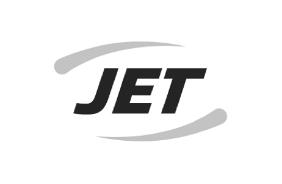Let’s go back in time for just one moment.
When I first turned 18 long ago, my only way of driving was by using my mother’s 2006 Nissan Micra.
Not exactly an optimal car for a 6.4ft rugby player.
I used this car to drive all over the place, to the beach, inside the city, and finally on steep country hills. With a manual transmission, this caused more than a few issues.
Every time I had to drive on these steep hills beads of sweat would start forming on my forehead as I’d beg the car to hit its biting point in a very precarious position.
While I always arrived at my destination safe (but a bit shaken), in those moments I would always think “I really wish I had automatic transmission right now.”
So now the real question you are probably asking yourself is “What does this have to do with retail fuel pricing?”
Many retailers we speak to still use extremely manual processes, consisting of tons of documents, all linked together, often in a maze-like way.
Cost prices, volumes, competitor prices and more are manually uploaded to a spreadsheet (or a piece of paper if you want to go really manual).
But, at the same time, you’ve done it this way for years. So what are the problems with these manual processes and what could it be costing your business if you have them?
Disorganization
Multiple data points in multiple places mean that it can be hard to stay on top of everything. “Did I update my cost price sheet? I swear I’ve done it, but I’m not sure…” or “Why hasn’t my Station Manager emailed the prices in yet?” are not good thoughts for fuel retailers to be having.
- Complicated Spreadsheets
Let’s be clear. Spreadsheets are AMAZING! This is a piece of software that has firmly planted itself into almost every business around the world for over forty years. They’ll always have a place in business. However, this doesn’t make them perfect or even ideal for every situation. The problem is that getting the data you need at any point in time can be tricky and more often than not they are built, owned and understood by individual stakeholders in a business. If those stakeholders leave or are not around, things come to a screeching halt.
- Excessive Texting/Emailing
Every morning you are receiving texts from your station managers with their price surveys/price execution confirmation. We’ve talked with retailers about having to go through 40+ texts or emails and all before 10 am. Stressful!
- Estimations
Because the process is manual, the ability to manipulate the numbers to optimize your business is limited. Sure, you can get a decent picture, but it’s usually after the fact and not as close to the real number as you’d like. Is having a close estimate good for your business? Sure! But having real-time accurate numbers is even better and will allow you to make better strategic decisions that drive profits.
In essence, while fuel retailers have been traditionally successful in managing their businesses with manual processes, it is now becoming an uphill battle against competition that is growing in size and modernizing their fuel pricing.
Change is always scary, but if automating your fuel pricing process means grabbing some extra volume, margin and even some of your own time back, then the pros far outweigh the cons.
Here at EdgePetrol, we have assisted retailers that had been working for 25+ years with manual processes, and every time it’s a joy to see them generate a profit they otherwise wouldn’t have made, using it to invest in their sites or even buy new ones.























